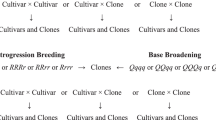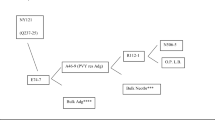Conclusion
Since the first appearance of the potato in Europe there have been difficult conditions for it to meet. As pointed out, its progress has been haphazard and indecisive. Radically changed environments, new plant pathogens and insects, and the increasing and varying human demands, have contributed toward larger improvements for survival and economical production. Although other species of tuber-bearing solanums are being studied and used in devising the Wanted plants, the greatest success would seem to rest with the 48-chromosomeSolanum tuberosunv itself. For this purpose its native lands and secret dwelling places must be searched with diligence and attention. The value of the plant in world economy, the great savings and security to be effected by its improvement, and the foreshadowing demands of the future justify any effort toward a further search for the parental and other strains of the potato, and possibly the diploid parents themselves, if there are any.
The potato breeding work for the United States is in the hands of able geneticists who have well considered, long-range plans for the improvement of the American potato (9). Until the sources of breeding stock have been thoroughly explored and the possibilities of improvement exhausted, no program of improvement will be complete. Chile alone may not yield the answer, but it offers a concrete, definite project of plant exploration and investigational work which can be concluded in a systematic manner.
Similar content being viewed by others
Literature Cited
Cañas Pinochet, Alejandro. 1901. La Papa. Investigaciones sobre su orijen, sus cultivos., i las enfermedades i pestes que la atacan en Chile. Actes de la Soc. Sci. du Chile 11 (2): 159–197.
Cavada, Francisco J. 1921. Diccionario Manual Isleño. 136 pp. Santiago de Chile.
Jorgensen, C. A. 1928. The experimental formation of heteroploid plants in the genussolanum. Jour. Genet. 19: 133–211, illus.
Juzepuk, S. W., and Bukaaov, S. M. 1929. A contribution to the question of the origin of the potato. USSR Cong. Genetics, Plant and Animal Breeding Proc. 3: 593–611. (In Russian. Summary in English pp. 610–611.)
Markham, Albert Hastings, Editor. 1880. The voyages and works of John Davis the navigator. The Hakluyt Soc. Pub. 59, 392 pp, illus. London.
Müntzing, Arne. 1935–36. The evolutionary significance of autopolyploidy. Hereditas 21: 261–378.
Rybin, V. A. 1929. Karylogical investigations on some wild growing and indigenous cultivated potatoes of America. Trudy Prikl. Bot., Genetike i Selek. (Bul. Appl. Bot., Genetics and Plant Breeding) 20: 655–720, illus. (In Russian. Summary in English pp. 711–718.)
Rybin, V. A. 1933. Cytological investigations of the South American cultivated and wild potatoes, and its significance for plant breeding. Trudy Prikl. Bot., Genetike i Selek. (Bul. Appl. Bot., Genetics and Plant Breeding) (2) 2: 3–100, illus. (In Russian. Summary in English pp. 97–98.)
Stevenson, F. J., and Clark, C. F. 1937. Breeding and genetics in potato improvement. U. S. Dept. Agr. Yearbook 1937: 405–444, illus.
Winge, O. 1925. Contributions to the knowledge of chromosome numbers in plants. Cellule 35: 303–324, illus.
Author information
Authors and Affiliations
Rights and permissions
About this article
Cite this article
MacMillan, H.G. The aid of exploration in potato improvement. American Potato Journal 19, 255–266 (1942). https://doi.org/10.1007/BF02851165
Issue Date:
DOI: https://doi.org/10.1007/BF02851165




